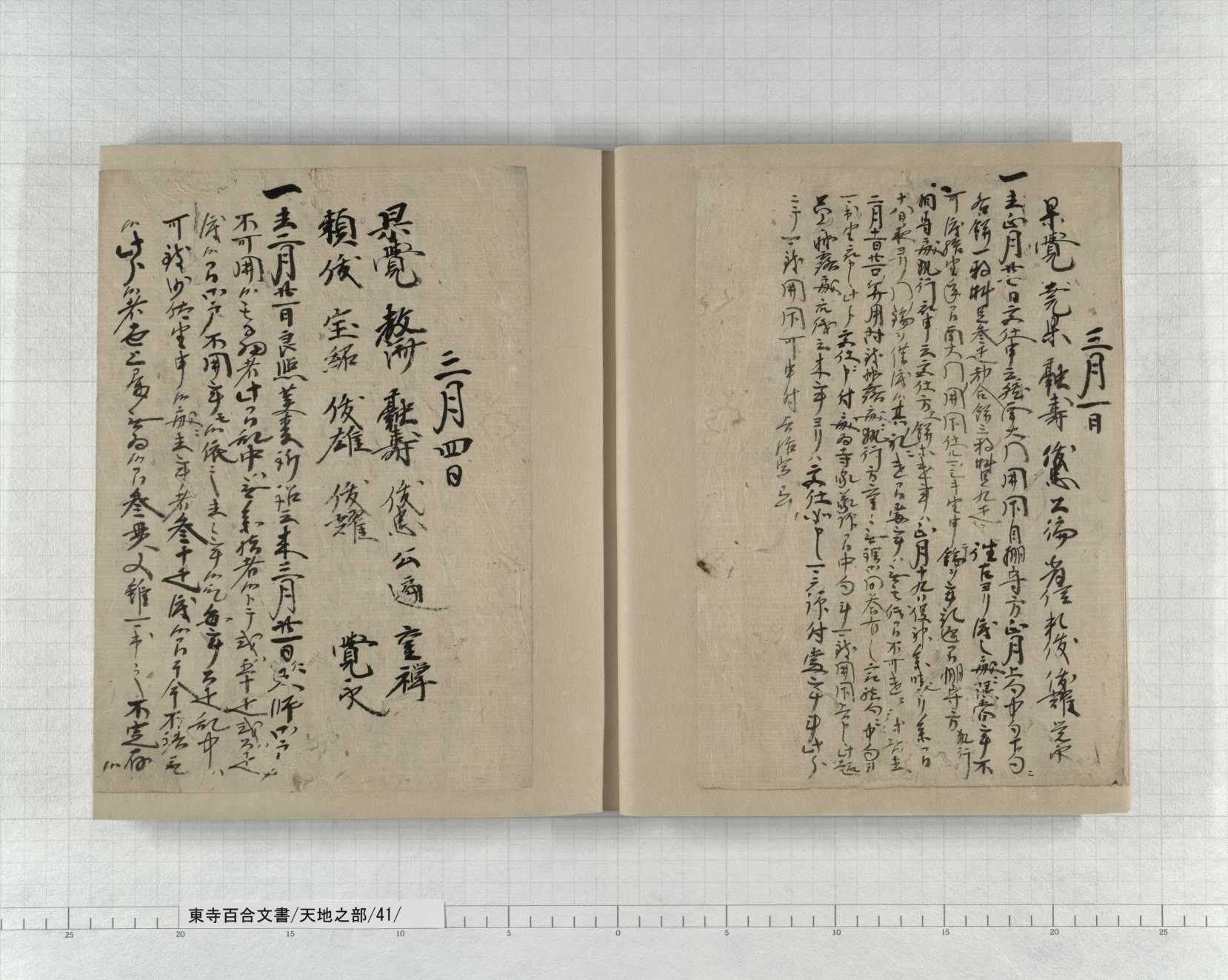
Hyojo-hikitsuke (評定引付), records of meetings organized by kuso (供僧) monks, allows us to understand the situation of Japanese society in medieval times.
The hyojo-hikitsuke above was written by kuso monks of Nijuikku-kata (廿一口方) around when the Onin and Bunmei War ended. The chapter of March 4, 1478, states that when the country was at peace, in other words, when there was no war, Toji collected 40-50 kanmon in offerings a day, and that the number of visitors was expected to increase on sunny days. This allows us to presume that Toji was worshipped by a great number of people crowding the premises of the temple.

Item (22) of Box-ne is hikitsuke of Chinjuhachimangu-kata (鎮守八幡宮方). According to the chapter of February 21, 1482, laborers were gathered from neighboring temples and manors under the order of Ashikaga Yoshimasa, the eighth shogun of the Muromachi Shogunate. Chinjuhachimangu-kata, which owned and managed land called Kuzekamishimo-sho (present-day Minami Ward, Kyoto City), complied to this order as the representative of Toji. The laborers were gathered to construct Yoshimasa’s residence, “Higashiyama-gosanso,” which is called Ginkaku-ji (銀閣寺) today.

According to the chapter of September 18, 1486, a tsuchi-ikki (土一揆), a riot started by farmers protesting against samurai, marched into Toji and barricaded themselves inside. Many of Toji’s important buildings, including Kondo (金堂) Hall, Kodo (講堂) Hall, and Chinjuhachiman-gu (鎮守八幡宮) Shrine, were burned down during this incident. It was not until a century later that the damaged or lost buildings of Toji were fully restored.